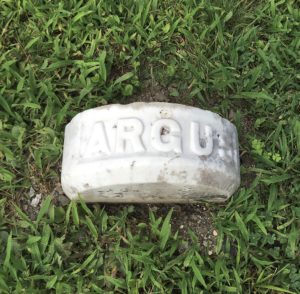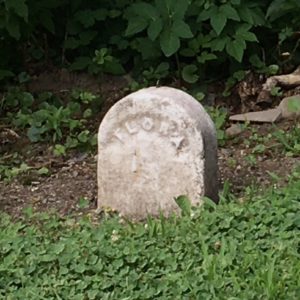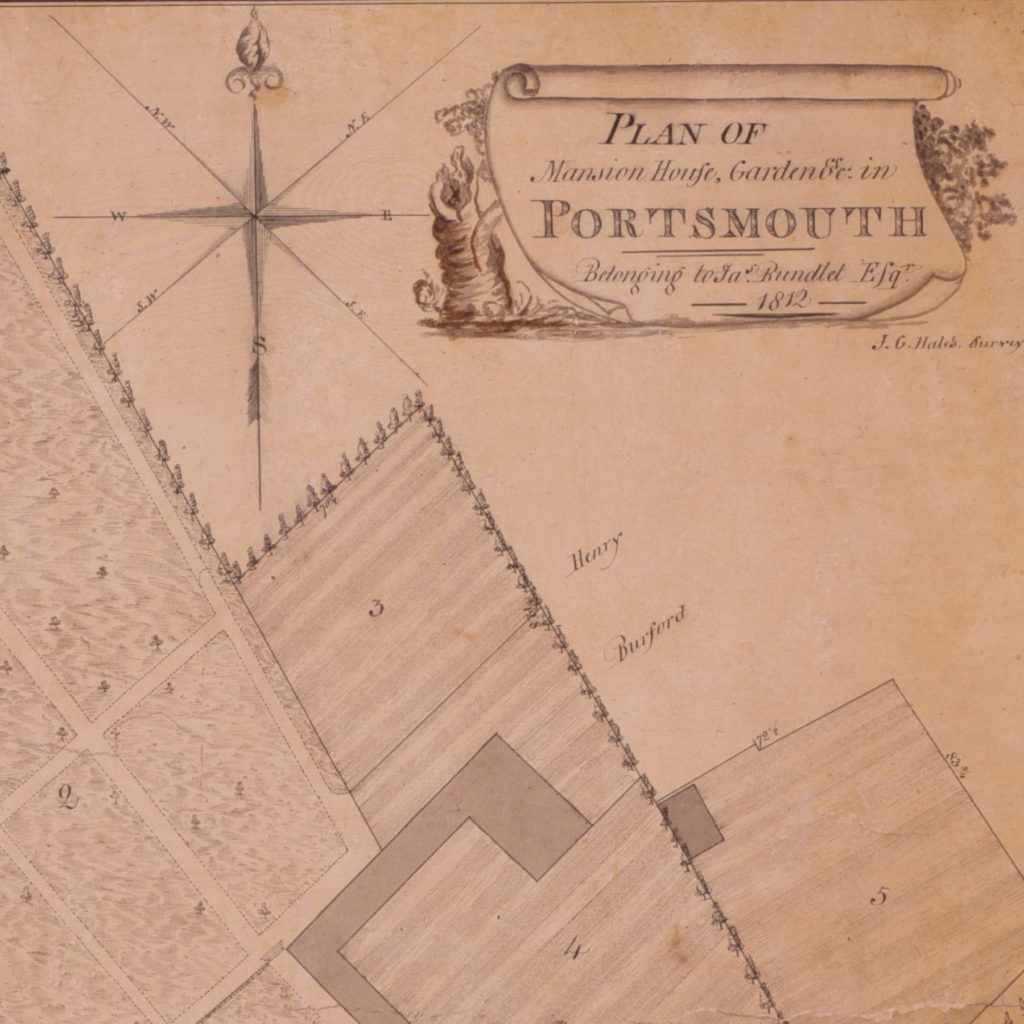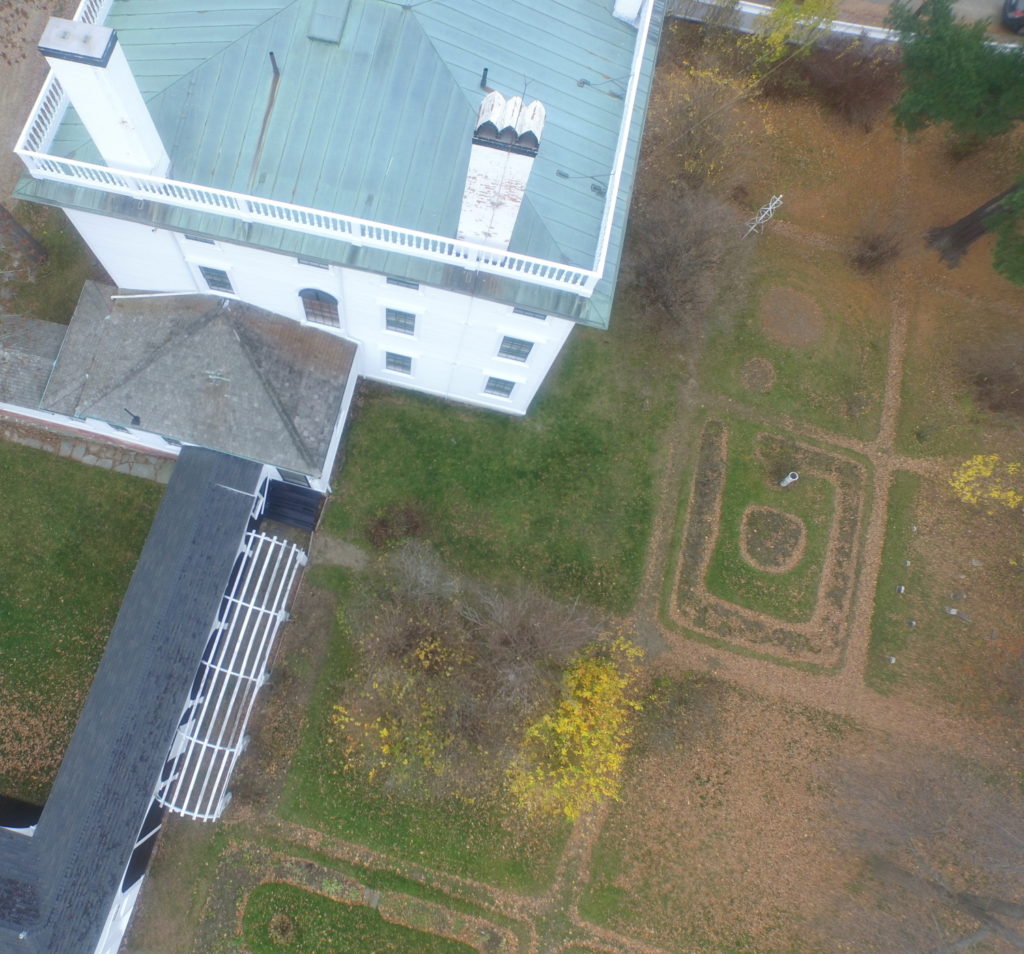 Rundlet-May House
Rundlet-May House
Outside In
A Garden for Purpose and Pleasure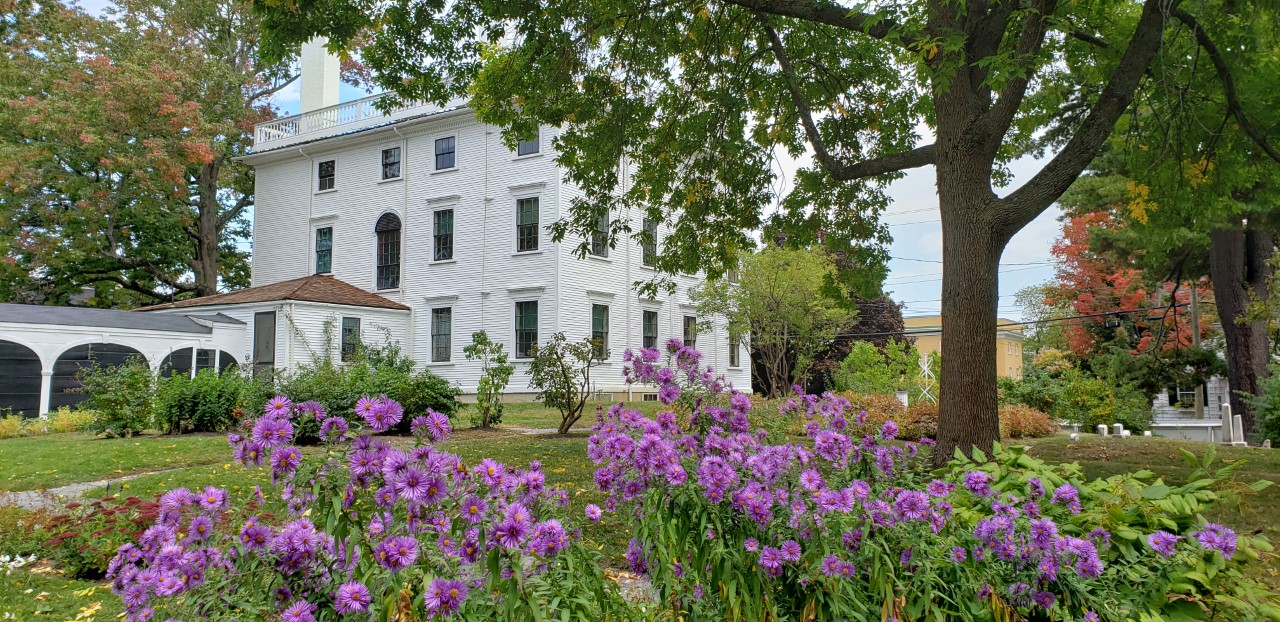
The gardens that the Rundlets planted, while changing in essence little over time, provided the family that lived in the house endless enjoyment over the years. Today, visitors to this Historic New England jewel in downtown Portsmouth will also find respite and beauty. Historic photographs from the archives and those taken more recently, offer information about plantings, landscape projects, and invaluable insight to what it was like to have and care for a garden and orchard of this scale over time.
House and Landscape Plan
James Hales Plan, 1812
This plan rendered by J. G. Hales in 1812 depicts the Rundlets’ house as a typical Neoclassical building of its time, with an L-shaped wing extending out the back of the house. Orchards comprised some of the garden plan, which is a regimented partitioning of room-like settings with pathways. The pathways are still maintained today, so even though this plan is somewhat idealised and pared down in the rendering, it demonstrates that the layout of the grounds and pathways have not changed much since the plan originated in 1812. On the plan is also depicted a fence that runs between the house and drive, and drive and fence in the service yard. Lombardy poplars may have been planted in front of the house, with lilacs framing the rear of the property. The plan also depicts the house before the Summer Kitchen (Scullery) was added on.
Views From Above
Rundlet-May house’s attention to detail and sturdiness of construction is perhaps even best understood from above, in these aerial views. Also noted are the carefully constructed pathways in the garden which have been maintained since they were created in 1807. The peony garden is between the house and the pet cemetery.
Hoyt Plan, 1853
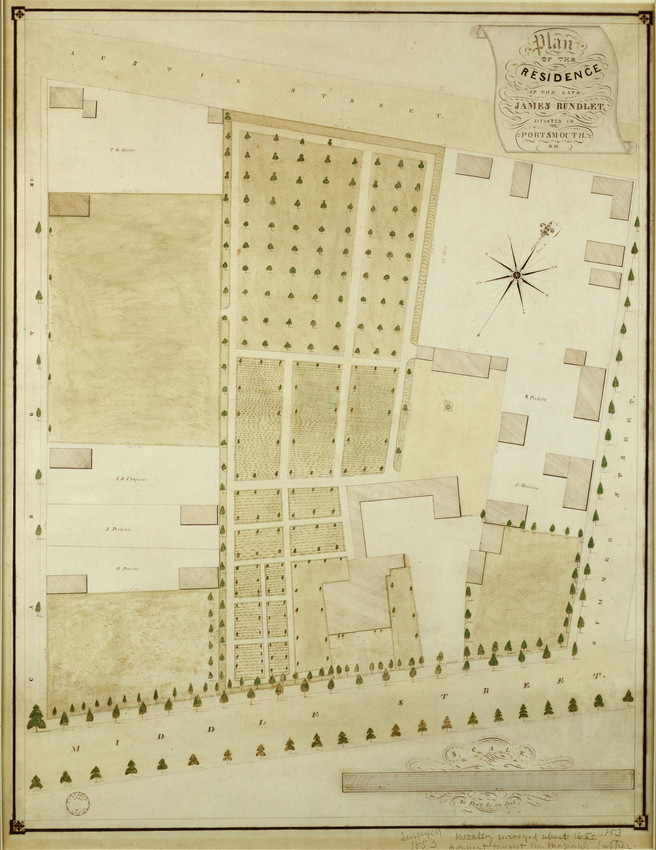
When the house was finished in 1807, the final purchases made noted in the account book were (between 1807-1809) pear trees, poplars, peach trees, $20.40 worth of grapevines and rose bushes from Samuel Larkin who also lived on Middle Street, and many trees including $7.16 of “fruit trees” in May 1809. The geometric plan of grid-like paths in the garden had been completed. By the turn of the twentieth century, trolley tracks lined the street out front, and the open fields facing Rundlet-May House were sold, and new houses were soon being built. In the back of the property, a Roman Catholic church could be seen on Austin Street, and a busy neighborhood was being developed around the Rundlets’ property.
Sources of Influence on the Landscape
Little is known about what gardening books, if any, the Rundlets owned when building the house, but in 1806 American Gardener’s Calendar was published by Bernard McMahon and was influential to many who were building gardens on a grand scale for their estates. There were many precedents before that which may have influenced the geometric plan, though there is no clear link to any specific landscape design that would have served as a primary influence.
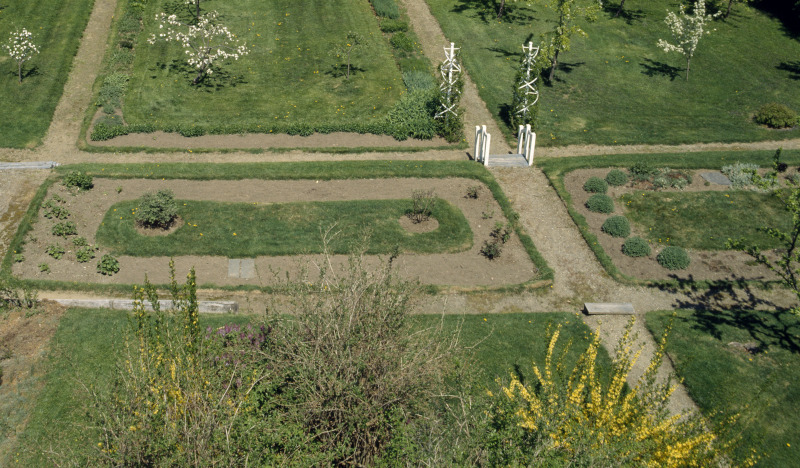
The terraced garden at Rundlet-May House was designed with regimented walkways and a prevailing grid plan punctuated with fruit trees, flower beds, and open space. Many French garden designs feature similarly regimented pathways, axials, and clearly delineated planted sections with the house as a central focus, as do some English gardens of the seventeenth and eighteenth century, and those dating from the Medieval period in Europe. Strong axials were also often prominent in Islamic and Mughal garden design and complemented by complex water features.
Like so many gardens of the eighteenth and nineteenth century in America, the Rundlet’s garden was full of scents and plant varieties that could be used to ward of unwanted odors of everyday life, as well as fruit to be canned, preserved, and used for cooking in a number of ways. Nothing was considered as wasted or unwanted material in the garden of that time period; everything had a purpose and the practical mixed with the pleasure garden at once.
Pet Cemetery
Creatures Great and Small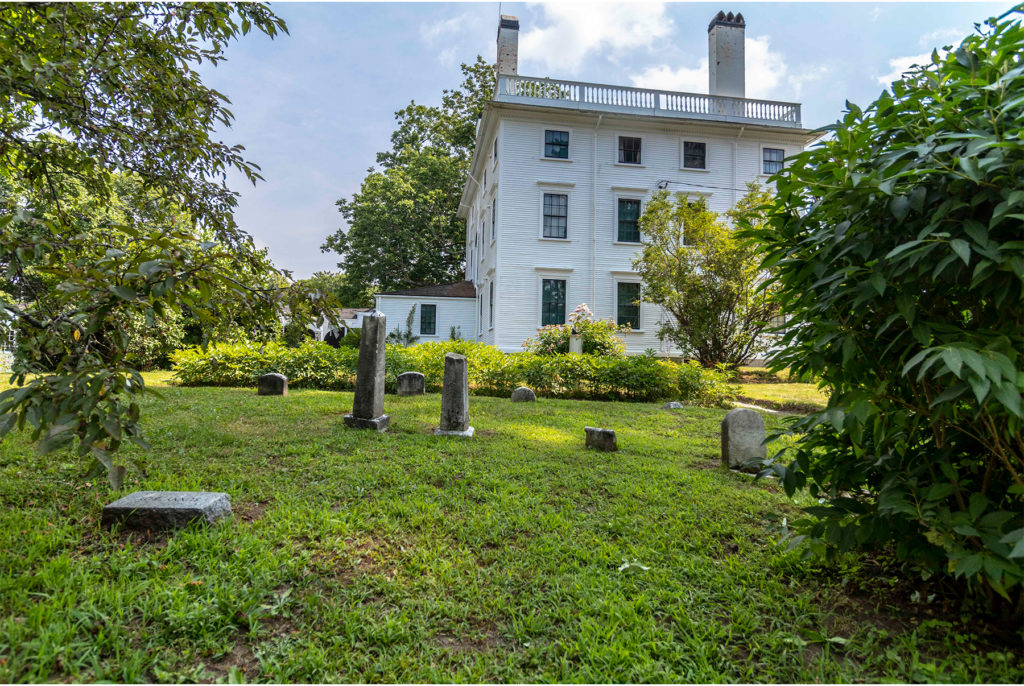
James Rundlet-May was a medical doctor with a strong interest in animals and their well-being. He was one of the co-founders of the New Hampshire Society for the Prevention of Cruelty to Animals and he and Mary Morison May gave a home to many animals while they lived at Rundlet-May House.
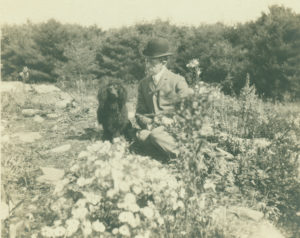
In late nineteenth-century America, pet cemeteries were becoming more fashionable. In a corner of the terraced garden, they buried beloved Flora. As the family story told, Flora was called the “Confederate Dog” by the neighbors, since she was rescued from an abandoned property in the South during the Civil War. Her tombstone was the first of ten that commemorated the lives of Rundlet-May pets. The last pet to find its eternal home in the cemetery is Sunny Boy, a lone canary among the dogs, and one that son Ralph May remembered as being a favorite of Mary Morison May.
